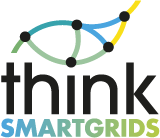At COP 25 in Madrid, the Heads of State and Government of the 28 Member States met for a European Council on December 12th and 13th 2019, and endorsed, despite the Polish President’s reluctance, the objective formulated by the European Commission through its European Green Deal: achieving carbon neutrality by 2050.
While energy production and consumption account for more than 75% of the EU’s greenhouse gas emissions, the decarbonisation of the European energy system is presented as one of the priorities of the Green Deal, thanks to “a fully integrated, interconnected and digitalized EU energy market”.
Under the leadership of its President, Ursula von der Leyen, the Commission aims to make Europe the world’s first carbon-neutral continent and the world leader in sustainable development, with a reduction of more than 50% in greenhouse gas emissions by 2030.
To achieve this objective, the Green Deal, which is not unlike the Green New Deal carried by some of the American Democrats, mentions, in addition to decarbonising the European energy system, three priorities of interest to smart grids.
The first concerns the mobility sector, with the transport sector expected to drastically reduce its greenhouse gas emissions by 90% by 2050.
Road transport alone accounts for nearly 72% of these emissions. To remedy this, the European Commission has specified that it will introduce and fix in 2021 the application of a more stringent rate on car pollution.
It is thus becoming essential for companies and individuals alike to accelerate their energy transition by developing and promoting smart charging, vehicle-to-grid and digital switchover, including the automation of mobility and the development of “intelligent road traffic management systems”. »
The issue of building construction and renovation is also presented as a priority. Digitalization is one of the main levers mentioned by the Green Deal to improve the energy performance of buildings.
The development of smart meters and IoT thus appears to be a means of optimizing and reducing energy consumption, while enhancing the role of consumers.
Finally, in January 2020, an investment plan of nearly €1,000 billion over 10 years will be presented to help Member States in their energy transition, particularly the poorest.
This fund should be used to finance the needs of States in terms of training highly qualified workers capable of integrating into this renewed energy sector.
It will also be necessary for the green deal to propose, through this plan, financing so that the infrastructure of the electricity networks, which are at the heart of the energy system, can be digitized as a whole and sufficiently robust to adapt to new uses.
The deployment of smart electricity grids then appears to be a sine qua non condition for a successful energy transition.
Indeed, the “smart grids”, which allow the massive integration of renewable energies and the development of new individual and collective uses in terms of energy consumption, have as a corollary a reduction in CO2 emissions, produced mainly by cities, which are particularly energy-intensive.
In conclusion, the Commission intends by its green deal to set a framework for this ecological revolution, in order to encourage Member States to take action against climate change, which knows no borders.
Sources :
https://ec.europa.eu/info/strategy/priorities-2019-2024/european-green-deal_fr



